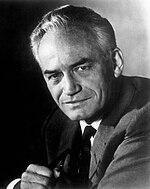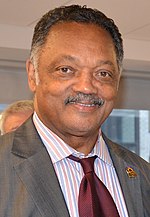President of the United Commonwealth
| President of the United Commonwealth of Continental States | |
|---|---|
 Seal of the United Commonwealth | |
|
File:Flag of the President of United Commonwealth.svg Presidential flag | |
| Style |
Mr. President (informally) His/Her Excellency (formally) |
| Type | Head of State |
| Residence | TBD |
| Appointer | National People's Congress |
| Constituting instrument | Constitution of the Continental States |
| Formation | 1 May 1921 |
| First holder | Aeneas Warren |
The President of the United Commonwealth, officially the President of the Presidium of the United Commonwealth of the Continental States is the chairman of the Presidium of the United Commonwealth, which is the collective head of state of the United Commonwealth. Officially, the President is not the head of state himself, but rather the head representative of the presidium, and prior to the 1982 constitution, the president had relatively little official power in of itself, other than ceremonial functions. However, in practice the President has often occupied a paramount leadership role, making him the de facto head of state and often the outward facing leader to the international community. The office of President of the United Commonwealth is discontinuous with the office of President of the United States, serving a different function despite its name. Unlike in the American system of governance (still employed in the Antilles), in which the President is considered the head of the executive branch, the office of President of the United Commonwealth is at the head of the legislative branch's National People's Congress. A joint session of both houses of the National Congress elects the Presidium to act on its behalf while the congress is not in session, and so the President can be seen as the highest legislative office in the country. In contrast, the Council of People's Commissars is the collective head of government and head of the executive branch, with its chairman, known as the Premier of the United Commonwealth, serving a similar role to that of a traditional president.
The presidency has its roots in the American Central Congressional Committee, created in 1917 as the highest legislative and administrative body of the Provisional Socialist United Commonwealth at the dawn of the Continental Revolutionary War. This committee collectively represented the American Constituent Assembly and had legislative powers in the form of Continental Decrees, which were then confirmed during the infrequent meetings of the assembly. However, this committee was largely sidelined in favor of the Council of People's Commissars, who had wide-reaching legislative and executive powers during the war, and instead the committee often acted as a liaison between the various elected interest groups of the revolution and the Continentalist leadership. At this time the title of "president" was not yet employed, with the head of the committee known simply as its chairman. The last chairman of the Congressional Committee was Ulysses Clark, who ceded the office upon the founding of the Continentalist States via the Union Treaty. The first constitution of the new nation formally decreed the creation of the Presidium to replace the Congressional Committee, and the 1st National Congress of the United Commonwealth elected Aeneas Warren as its inaugural chairman. Although in theory the President was to be a largely figurehead position, during the Presidency of Aeneas Warren he held near complete control over the politics of the United Commonwealth, as not only was he an unchallenged and active President, he also served as Premier for the People's Commissars and General Secretary of the Continentalist Party simultaneously. During the reign of Seamus Callahan, governance of the United Commonwealth effectively broke from the collective leadership model as numerous offices were consolidated around Callahan. Although the power of the Presidium was restored, and enshrined in the current constitution, Callahan's influence influenced the idea of a sole president as head of state in the public conscious.
Officially the role of the President is to carry out ceremonial head of state matters, including meetings with foreign officials and to "foster a national sense of unity and pride". The President is the overseer of discussions and debates among the Presidium, formally acting as a mediator, and informally as a "first among equals" due to his control over the agenda. The President serves at the discretion of the National Congress, and can be re-elected or removed from office by a vote at a session of the congress, although in practice the President usually resigns before such a vote is called. The current president is Daniel Muir, who was selected to the office in 2020.
History
Constitutional powers and responsibility
Election and selection
List
| No. | Portrait | Vice President (lifetime) |
Term | Election | NPC | Vice President | Paramount leader |
|---|---|---|---|---|---|---|---|
| 1 | 
|
Aeneas Warren (1871–1922) |
1 May 1922 – 17 September 1922 |
– |
|
William Z. Foster | Himself |
| 2 | 
|
William Z. Foster (1881–1923) |
17 September 1922 – 23 September 1922 |
– |
|
Vacant | Disputed |
| Vacancy during the First Triumvirate from 23 September 1922 to 2 December 1922 | |||||||
| 3 | 
|
Coleman Mueller (1870–1948) |
2 December 1922 – 8 November 1924 |
– |
|
Samson Zima | Seamus Callahan |
| 4 | 
|
Seamus Callahan (1875–1947) |
8 November 1924 – 1 June 1947 |
Samson Zima (1922–1940) Ava Brown (1940–1944) Jack Tracy (1944–1947) |
Himself | ||
| 5 | 
|
Jack Tracy (1903–1982) |
1 June 1947 – 3 August 1950 |
|
Daniel Plainview | Second Triumvirate | |
| Amelia Fowler Crawford | |||||||
| 6 | 
|
Daniel Plainview (1908–1999) |
3 August 1950 – 20 November 1956 |
Vacant (1950–1952) |
Amelia Fowler Crawford | ||
| Elaine Carroll (1952–1956) |
Lysander Hughes | ||||||
| 7 | 
|
Lysander Hughes (1897–1958) |
20 November 1956 – 19 December 1958 |
|
Elaine Carroll | Himself | |
| 8 | 
|
Elaine Carroll (1900–1981) |
19 December 1958 – 20 November 1960 |
– |
|
Vacant | Third Triumvirate |
| 9 | 
|
Rupert Gardner (1908–1968) |
20 November 1960 – 25 October 1968 |
Raymond Beshear | Himself | ||
| Vacancy from 25 October 1968 to 8 November 1968 | |||||||
| 10 | 
|
Christopher Yeager (1914–1992) |
8 November 1968 – 8 November 1980 |
Christopher McCormack (1968–1972) |
Charles Acker | ||
| Aelita Z. Peterson (192–1980) |
Himself | ||||||
| 10 | 
|
Simon Valure (1934–1999) |
8 November 1980 – 20 January 1989 |
Isaiah Revindon (1980–1984) |
Christopher Yeager | ||
| Samantha Carter (1984–1988) |
Himself | ||||||
| 10 | 
|
Jackson Rothko (1930–2011) |
20 January 1989 – 20 January 2001 |
Gregory Samson (1988–1992) Sarah Volantin (1992–1996) Sebastian Summers |
Himself | ||
| 10 | 
|
Sebastian Summers (1942–Present) |
20 January 2001 – 20 January 2009 |
Joseph H. Seadon | Jackson Rothko | ||
| Himself | |||||||
| 10 | 
|
Helene Poirier (1960–Present) |
20 January 2009 – 20 January 2017 |
Marcus Haywood | Herself | ||
| 10 | 
|
Anthony Malito (1965–Present) |
20 January 2017 – 6 January 2019 |
|
August Lanson (2017–2018) Joseph Ojeda (2018–2019) |
Himself | |
| 10 | 
|
Daniel Muir (1950–Present) |
6 January 2019 – Present |
Joseph Ojeda (2019) Clark S. Key |
Himself | ||

